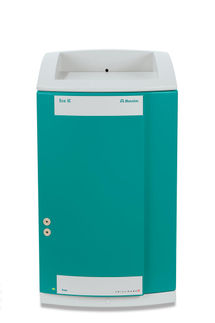To use all functions of this page, please activate cookies in your browser.
my.chemeurope.com
With an accout for my.chemeurope.com you can always see everything at a glance – and you can configure your own website and individual newsletter.
- My watch list
- My saved searches
- My saved topics
- My newsletter
CarbazoleCarbazole is an aromatic heterocyclic organic compound. It has a tricyclic structure, consisting of two six-membered benzene ring fused on either side of a five-membered nitrogen-containing ring. The compound's structure is based on the indole structure but in which a second benzene ring is fused onto the five-membered ring at the 2-3 position of indole (equivalent to the 4a-9a double bond in carbazole). Product highlightA classic laboratory organic synthesis for carbazole is the Borsche-Drechsel cyclization [1] [2]. In the first step phenylhydrazine is condensed with cyclohexanone to the corresponding imine. The second step is a hydrochloric acid catalyzed rearrangement reaction and ring-closing reaction to tetrahydrocarbazole. In one modification both steps are rolled into one by carrying out the reaction in acetic acid [3]. In the third step this compound is oxidized by Red lead to carbazole itself. Another classic is the Bucherer carbazole synthesis. Related aromatic compoundsReferences
Categories: Aromatic compounds | Heterocyclic compounds (3 rings) | Amines |
| This article is licensed under the GNU Free Documentation License. It uses material from the Wikipedia article "Carbazole". A list of authors is available in Wikipedia. |
- Sodium-ion batteries: New storage mechanism for cathode materials - New approach provides a fresh perspective on designing high-efficiency, fast-charging batteries
- Pilot plant for manufacture of high-temperature superconductors goes on stream
- Category:Polish_organic_chemists
- m-VROC II | Viscosímetros | Sphera Analytics
- Anions Matter - Zinc-ion hybrid capacitors with ideal anions in the electrolyte show extra-long performance







